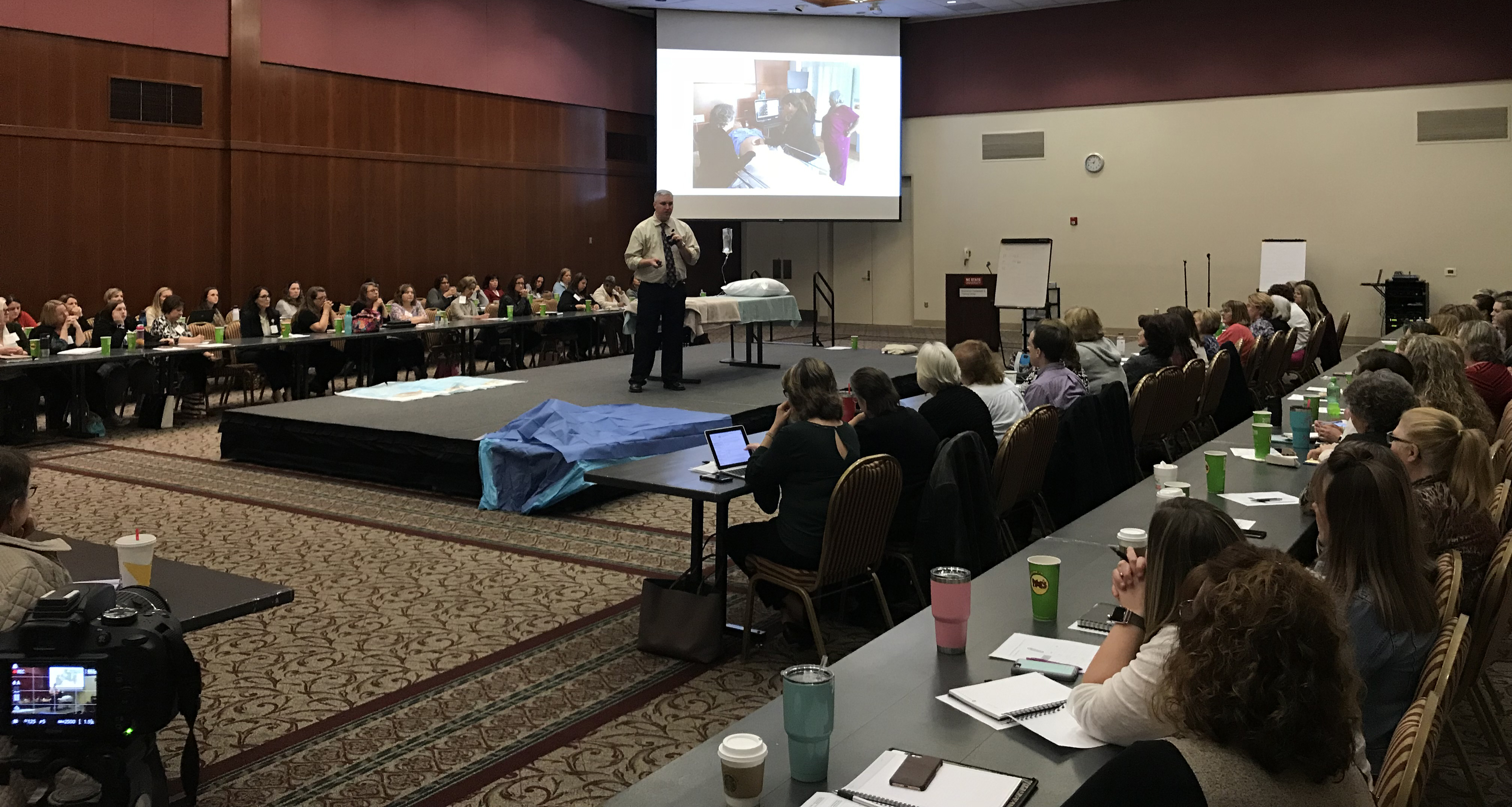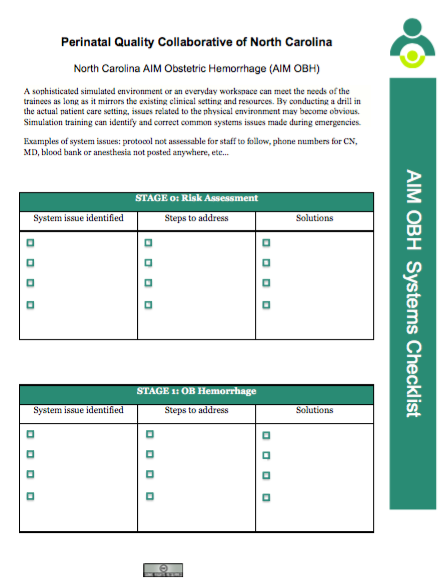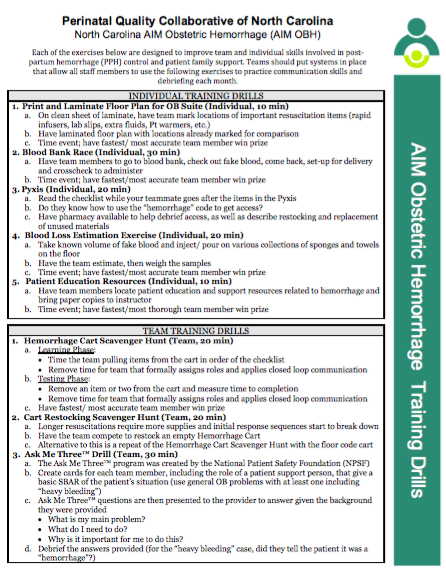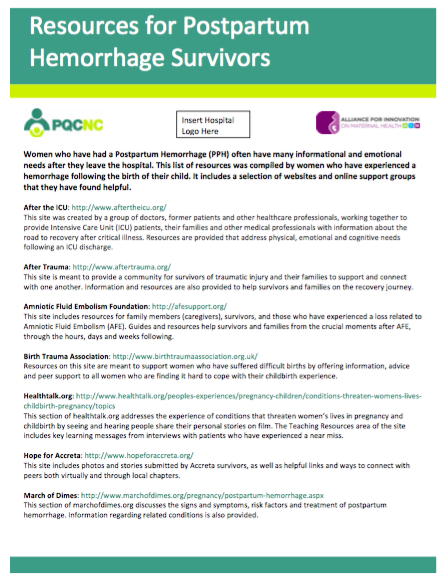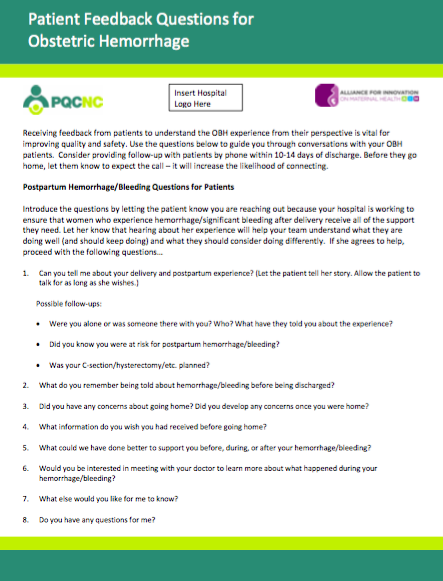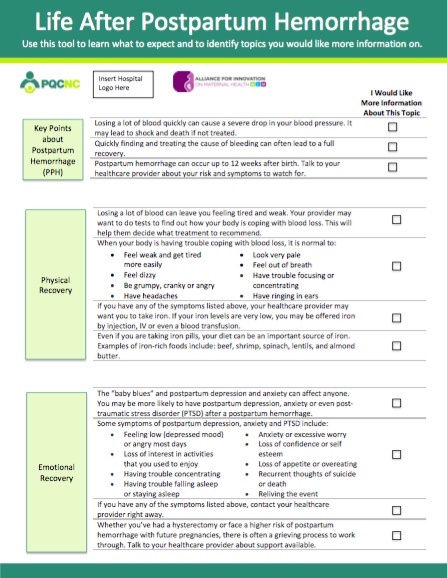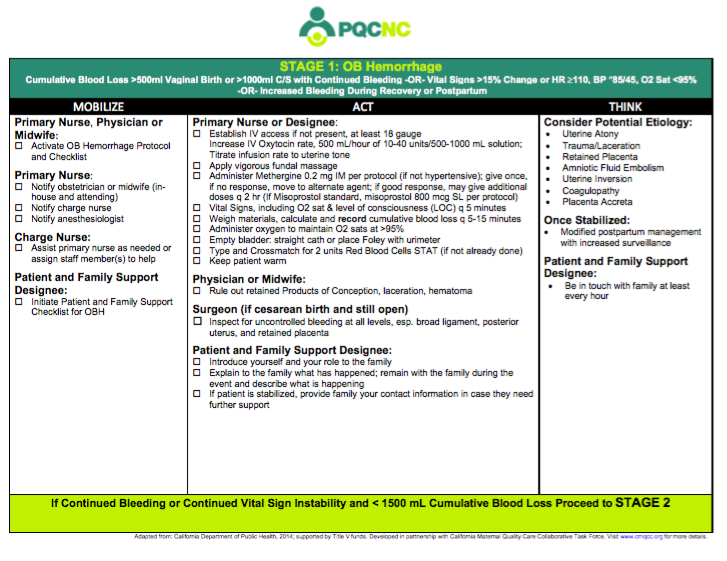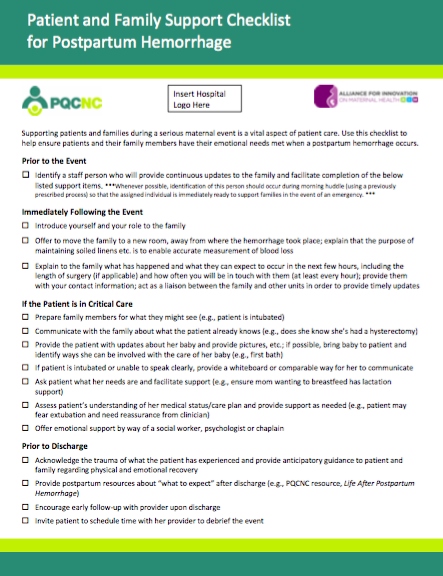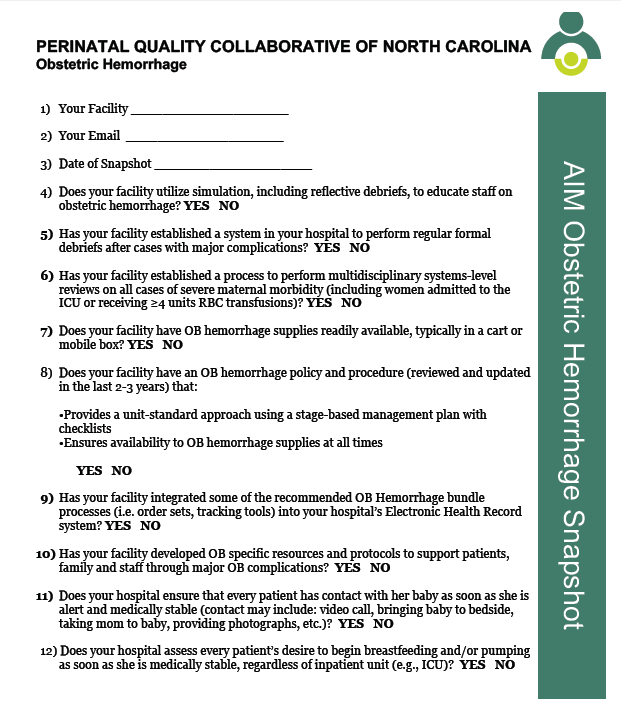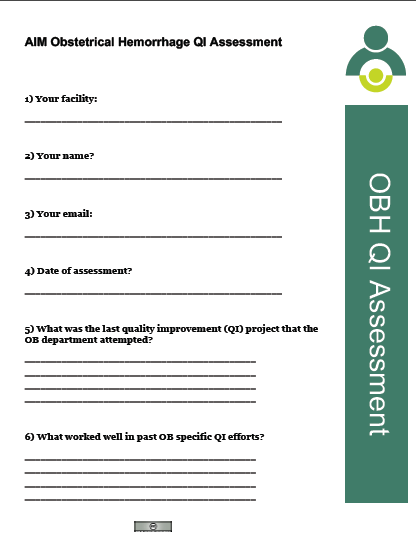Life after Postpartum Hemorrhage - Providing women with anticipatory guidance following a Postpartum Hemorrhage (PPH) is an essential part of discharge preparation. This tool, developed in partnership with PPH survivors, provides women and their families with information about what to expect - and what to symptoms to be aware of - when they go home. The form includes a place for women to indicate which topics they would like more information about and addresses issues related to physical recovery, emotional recovery, and when to seek care. Consider using this tool to supplement existing discharge education information or as a part of the postpartum visit.
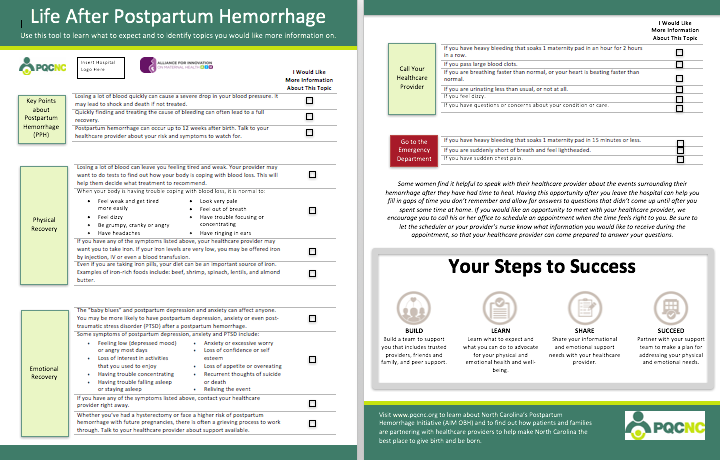
Download "Life After Postpartum Hemorrhage'
Resources for Postpartum Hemorrhage Survivors (see also individual links below) - Women who have had a Postpartum Hemorrhage (PPH) often have many informational and emotional needs after they leave the hospital. This list of resources was compiled by women who have experienced a hemorrhage following the birth of their child. It includes a selection of websites and online support groups that they have found helpful. Consider sharing this tool with women as part of their discharge education or as part of the postpartum visit.
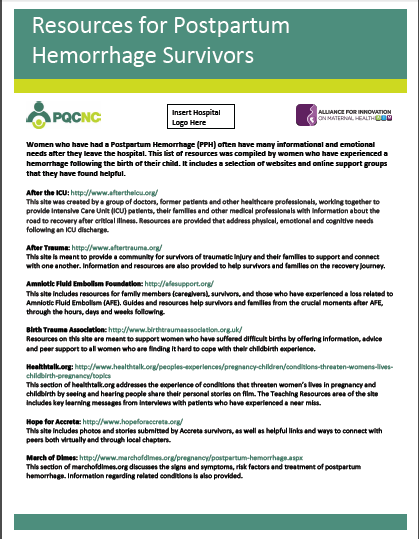
Download 'Resources for Postpartum Hemorrhage Survivors'
After the ICU: This site was created by a group of doctors, former patients and other healthcare professionals, working together to provide Intensive Care Unit (ICU) patients, their families and other medical professionals with information about the road to recovery after critical illness. Resources are provided that address physical, emotional and cognitive needs following an ICU discharge.
After Trauma: This site is meant to provide a community for survivors of traumatic injury and their families to support and connect with one another. Information and resources are also provided to help survivors and families on the recovery journey.
Amniotic Fluid Embolism Foundation: This site includes resources for family members (caregivers), survivors, and those who have experienced a loss related to Amniotic Fluid Embolism (AFE). Guides and resources help survivors and families from the crucial moments after AFE, through the hours, days and weeks following.
Birth Trauma Association: Resources on this site are meant to support women who have suffered difficult births by offering information, advice and peer support to all women who are finding it hard to cope with their childbirth experience.
Healthtalk.org: This section of healthtalk.org addresses the experience of conditions that threaten women’s lives in pregnancy and childbirth by seeing and hearing people share their personal stories on film. The Teaching Resources area of the site includes key learning messages from interviews with patients who have experienced a near miss.
Hope for Accreta: This site includes photos and stories submitted by Accreta survivors, as well as helpful links and ways to connect with peers both virtually and through local chapters.
March of Dimes: This section of marchofdimes.org discusses the signs and symptoms, risk factors and treatment of postpartum hemorrhage. Information regarding related conditions is also provided.
Medically Induced Trauma Support Services: The Medically Induced Trauma Support Services (MITSS) site includes a section devoted to patients and families. Resources focus primarily on therapeutic needs and support. In addition to accessing informational support, visitors to the site can read or watch videos of patient and family stories and connect to online support groups.
Postpartum Support International: The site provides links to information about perinatal mood and anxiety disorders, including risk factors, symptoms and treatments. Visitors to the site are able to identify local resources, chat with an expert or join an online support group. Highlights include resources for special groups such as military families, women of color, fathers, and more.
Preeclampsia Foundation: This site includes multiple resources on preeclampsia and other hypertensive disorders of pregnancy. Visitors can link with health experts for advice and connect with other preeclampsia survivors through the Community Forum or Share Your Story thread.
Prevention and Treatment of Traumatic Childbirth (PATTCh): Information on this site helps explain the components of traumatic birth and describes the symptoms, risk factors, treatment and prevention of traumatic birth.
Solace for Mothers: The resources available through this site are meant to offer immediate, personal support to mothers and others who are struggling with birth trauma, PTSD after childbirth and anxiety caused by their birthing experiences.
Facebook Support Groups
HFA Hysterectomy due to Childbirth Support Group: This is a Facebook Group for women who required a hysterectomy due to childbirth.
Maternal Near-Miss Survivors: This Facebook Group is designed to be a safe place where survivors of a maternal near miss find comfort and offer support to one another. A maternal near miss is defined as an event where a woman nearly dies due to pregnancy or childbirth related complications.
Postpartum Hemorrhage: This Facebook Group is for people who have experienced a postpartum hemorrhage or excessive blood loss following childbirth. Members include parents, birth workers and health providers.
Postpartum Hemorrhage and Hysterectomy: This is a Facebook Group for women who have experienced a postpartum hemorrhage and hysterectomy.
Unexpected Project: This Facebook Page is a place for the survivors and loved ones of pregnancy-related death and near-death in the USA to share their stories and raise awareness. Members include women who survived a near-miss, individuals who support near-miss survivors, and loved ones who lost a woman due to complications of pregnancy.
